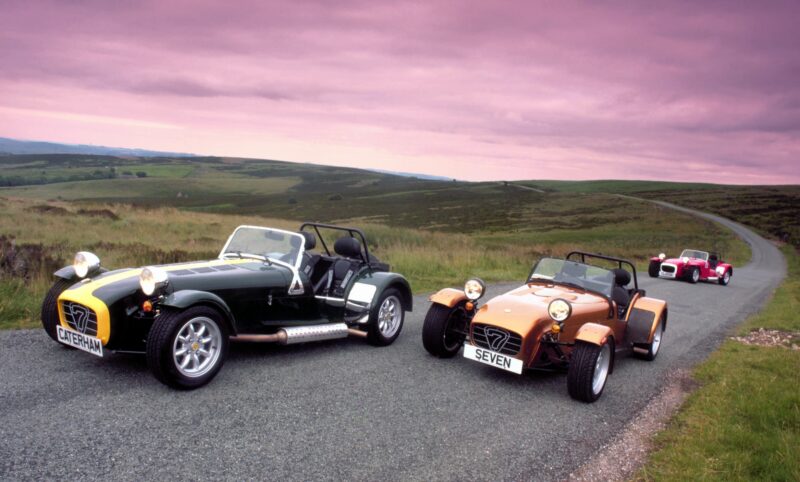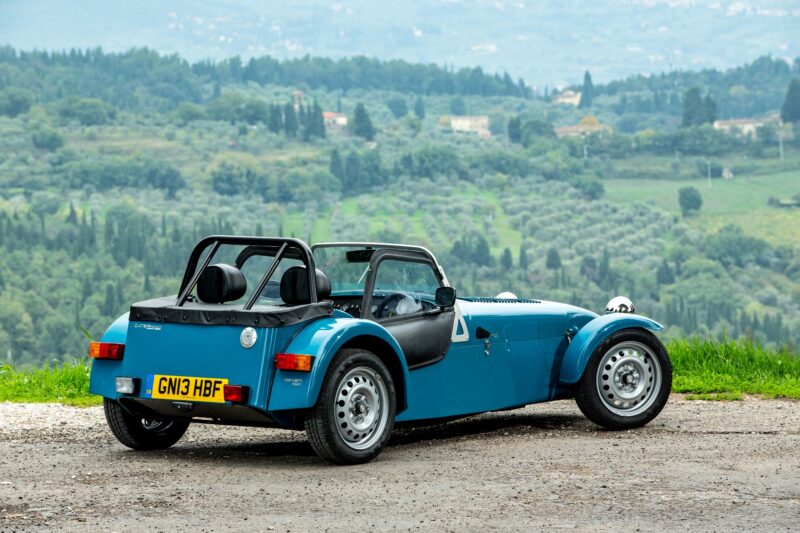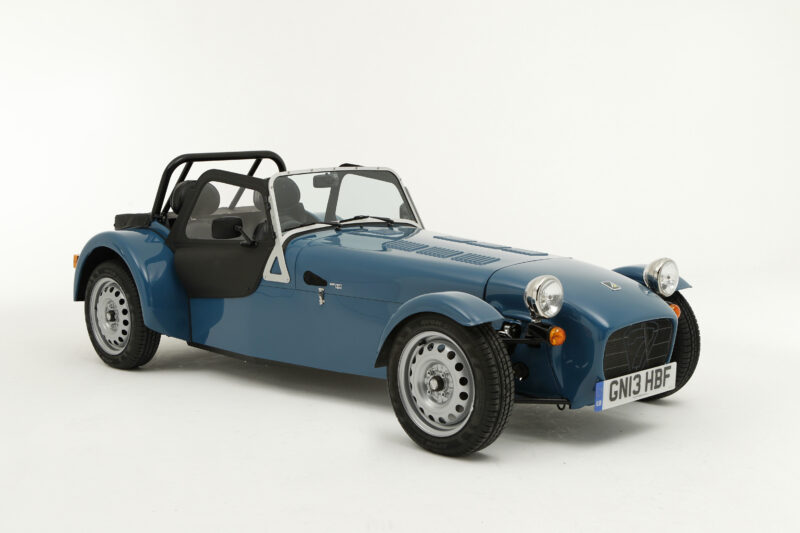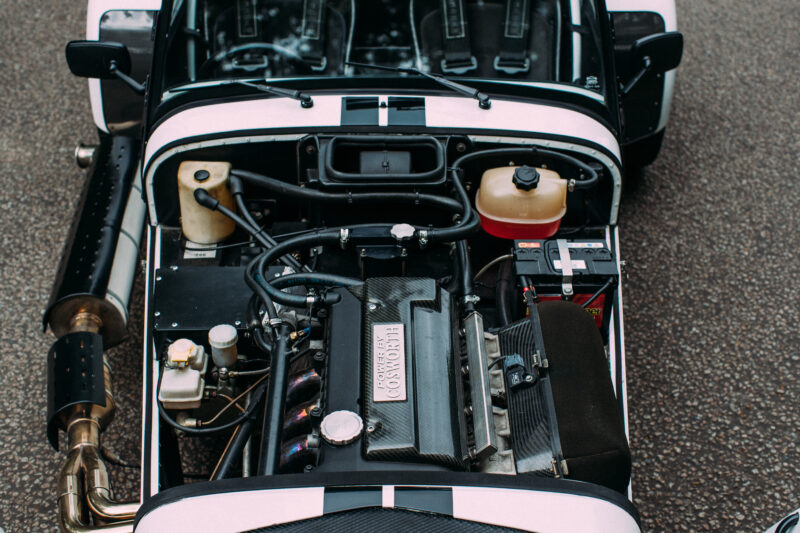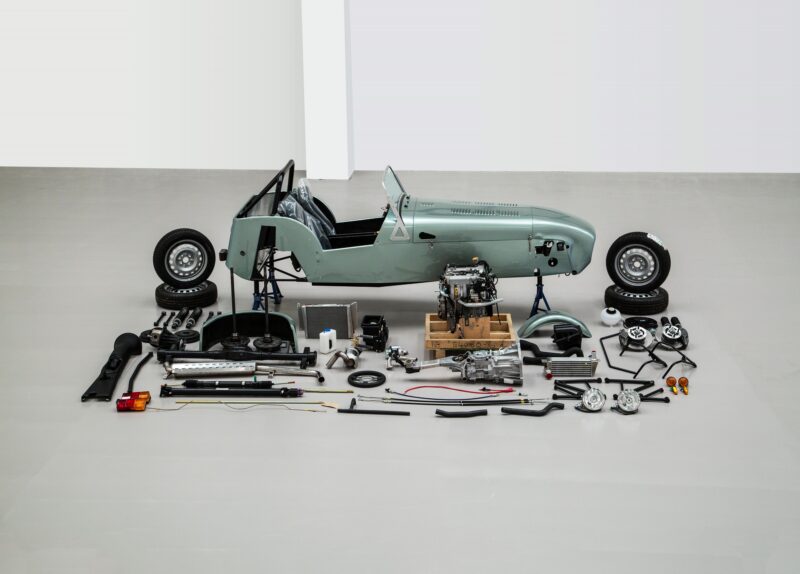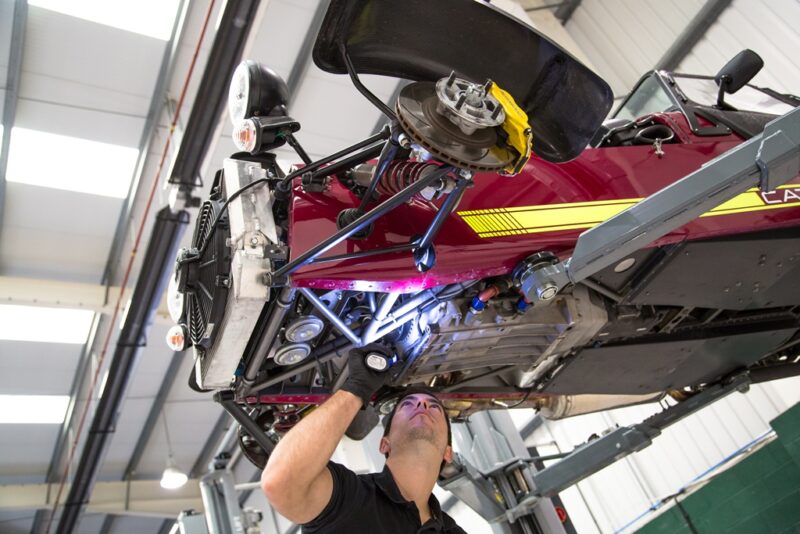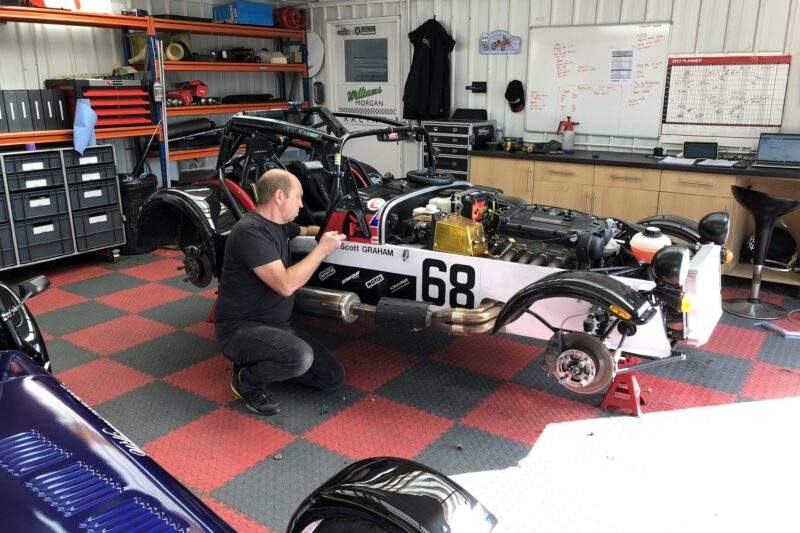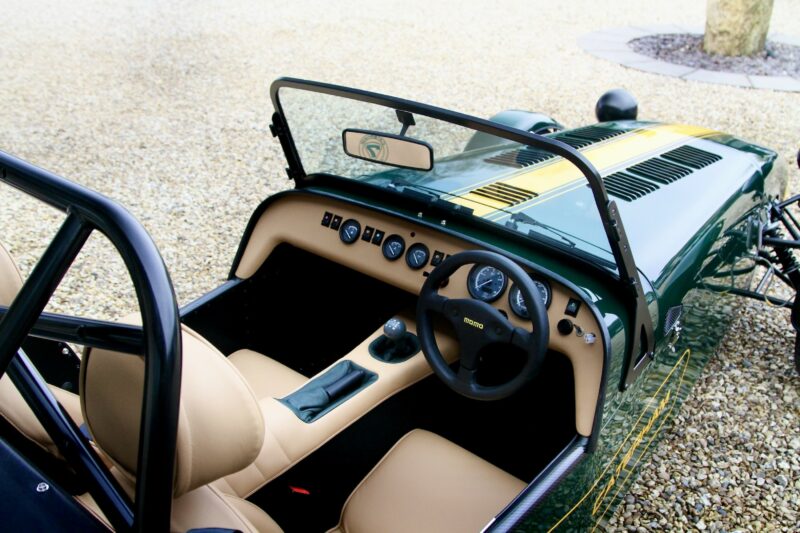The Caterham Seven – Five Things You Need to Know

We’re almost into April which means we’ve made it through Second Winter and past the Spring of Deception so it’s not long until summer, right? As optimistic as that may be we can’t help but begin to turn our thoughts towards warmer weather and dryer track days. Let’s be honest, driving around Brands Hatch in the pouring rain with the windscreen misting up just isn’t as much fun as blasting through Paddock Hill Bend in an open top roadster with the sun on your helmet. Ahem… And what better steed to slide about in than a Caterham Seven? This is of course a rhetorical question. Perennially popular among the track day set, hooning around your favourite circuit in one of these purpose built sportsters is about as much fun as you can have without a race license. Or whipping off your trousers.
Having been around since 1973 and taking over from the Lotus Seven, itself having been produced since 1957, the Caterham Seven has now been finely honed into a near perfect track car that can trace its lineage directly to Colin Chapman’s original design philosophy of “simplify, then add lightness”, a term that encapsulates the Lotus Seven, and later Caterham Seven perfectly.
From the very beginning the Lotus Seven was available as either a fully built car from the factory or as a box of bits in kit form that customers could bolt together themselves as a cheaper alternative. Here was a road legal race car that could also be used for Clubman competitions and as such it was incredibly popular. All good things must come to an end, however, and Lotus decided to drop its kit car image in 1973 in favour of producing high-end sports cars but Caterham Cars, a respected Lotus Seven dealer at the time, didn’t agree and so founder Graham Nearn struck a deal with Chapman and purchased the rights to continue manufacturing the Seven, albeit under the Caterham name.
Caterham continued to offer the Seven, based on Lotus’ Series 3 but now obviously using its own branding, in both kit and fully built forms, and its a process that survives to this day, offering buyers the opportunity to build their own – a concept that Chapman pioneered. Things have come a long way since the ’50s though and a modern day, top of the range Caterham Seven 620, with its Supercharged 2.0-litre Ford Duratec engine, can dispatch 60mph in less than three seconds – a far cry from the original’s 6.2 – but that was still incredibly impressive for the time and that focus on performance has always been the driving force behind these cars with even the least powerful examples being an absolute hoot to drive.
Because the Seven is still being made then, if you’re buying a brand spanker then all you need to worry about is the spec but for those of you thinking about picking up a used model, and there are plenty of different types to chose from, then here are five things you need to know about the Caterham Seven.
1) Models
With so many different models and specs on the second hand market (including all of the kit builds) it can be daunting to know which one to go for so do your research. Spend some time exploring the various models available and have a think about how you actually want to use the car. Will track days feature heavily or will it be more of a weekend B-road blaster? Will you need a fully race-prepared rocket ship or at least a couple of creature comforts? And by that we mean things like a windscreen, not air conditioning. No doubt your ego will be whispering in your ear, trying to persuade you to get the most powerful variant, but unless you’re chasing lap times every weekend then even the lowest output 80bhp cars will provide more than enough excitement and enjoyment for most. Trust us.
Due to their simple design, perfected over decades of development, Sevens are inherently robust, reliable and easy to work on and generally speaking aren’t burdened with high miles. Second hand prices reflect this with values being pretty stable so your main issue is going to be how well any potential Seven has been maintained and whether or not it’s been binned. Both factory built cars and shed Sevens are required to be individually approved (IVA) so don’t let a kit car build put you off – either type will have you successfully chasing rainbows on a maximum high.
2) Body and Chassis
The body panels may be a mixture of aluminium and fibre glass or carbon fibre, meaning ‘rust’ isn’t going to be an issue in the truest sense, but you can’t expect a Seven not to deteriorate if left to its own devices. The aluminium will oxidise if not regularly cleaned properly and galvanic corrosion can be an issue where the aluminium panels meet the car’s tubular steel chassis which will likely reveal itself as bubbling under the paintwork.
Available in two sizes, depending on your dimensions and how easy you want to be able to get in and out, the chassis can be susceptible to rust if the powder coating is damaged or flaking, allowing water to gain access to the steel underneath and play havoc, so ensure everything is still fresh. Check the frame for cracks in the welds too, as well as for any accident damage and less than perfect repairs. Speed bumps are not a Caterham’s friend either so inspect for any knocks and bruises while you’re under there.
3) Engine and Gearbox
Various engines have been utilised over the years, form the early Kent and Rover K-Series units to Suzuki motorcycle engines and the newer Ford powerplants but whichever lump is fitted it’s imperative that the correct service schedule has been maintained throughout the car’s life. Generally speaking this will be every 10-12,000 miles but could be less depending on how much and what kind of use the car has had.
Check for any leaks, as well as the usual signs of head gasket failure on the K-Series engines (mayo in the oil filler, white smoke, etc.). Due to the stresses of track use oil starvation can be an issue so listen for any excessive valvetrain noise and ensure the car displays decent oil pressure readings. A dry sump or swirl tank setup is a good upgrade and may be worth considering if you’re planning on regularly using the car in anger at the track.
Caterham used Ford’s Type 9 five-speed manual gearbox as well as its own six-speed unit, depending on the car. The T9 is cheap and reliable but the gearing of the six is way better suited to the Seven. There’s nothing particularly trick with either but do listen for any untoward noises from the ‘box itself, the clutch or the diff. A replacement gearbox is a relatively simple and inexpensive job in the grand scheme of things.
4) Suspension and Steering
Here’s where you’re going to want to pay particular attention to ensure everything is tickety-boo and configured correctly because a decent suspension setup is key to how well these cars handle. Front suspension comes courtesy of double wishbones and dampers and depending on the year of manufacture the rear will vary between a semi-independent De Dion setup and a live axle with trailing arms and a Panhard rod. (The CSR from 2005 featured fully independent suspension all round, among other upgrades.) It all works well and as long as it’s dialled in properly the difference between them isn’t as stark as you might think.
A general looseness when driving, as well as any clonking noises, can be indicative of worn bushes and uneven tyre wear can signify worn suspension or incorrect alignment. If possible, raise the car off the ground and spin the wheels and listen for any unusual noises and inspect the front wishbones. While you’re at it grab the wheels at the top and bottom and try and move them in and out to check for any play in the wheel bearings.
Most Sevens will have seen some track action at some point so do bear that in mind but the good news is that these are incredibly light cars and so components are under a lot less stress than “normal cars”. Parts are pretty cheap too and Sevens are designed to be worked on at home so the cost and effort to replace any worn consumables shouldn’t be too prohibitive.
5) Interior
Don’t expect Bentley levels of comfort here. Caterham Sevens are stripped out roadsters with a focus on performance and as such interior trim is minimal and utilitarian. Cars could be optioned with added accoutrements such as side windows, a heater and upgraded seats but how you fit into it all is arguably more important than the material it’s made from. Don’t worry though, if you’re still carrying a bit of Christmas weight you can always install a removable steering wheel that comes with the added bonus of extra security too.
For anyone that’s ever tried to get in and out of a Caterham Seven you’ll know just how tempting it is to not only stand on the seat but also to try and use the windscreen as a hand rail as you squeeze yourself into the cockpit. Both of these actions can wreak havoc on the interior so check both for evidence of any ham-fistedness. Everything is replaceable and interchangeable though so you can always upgrade bits and pieces as you go. Make sure all of the switches and gauges work, especially on home-built cars.

